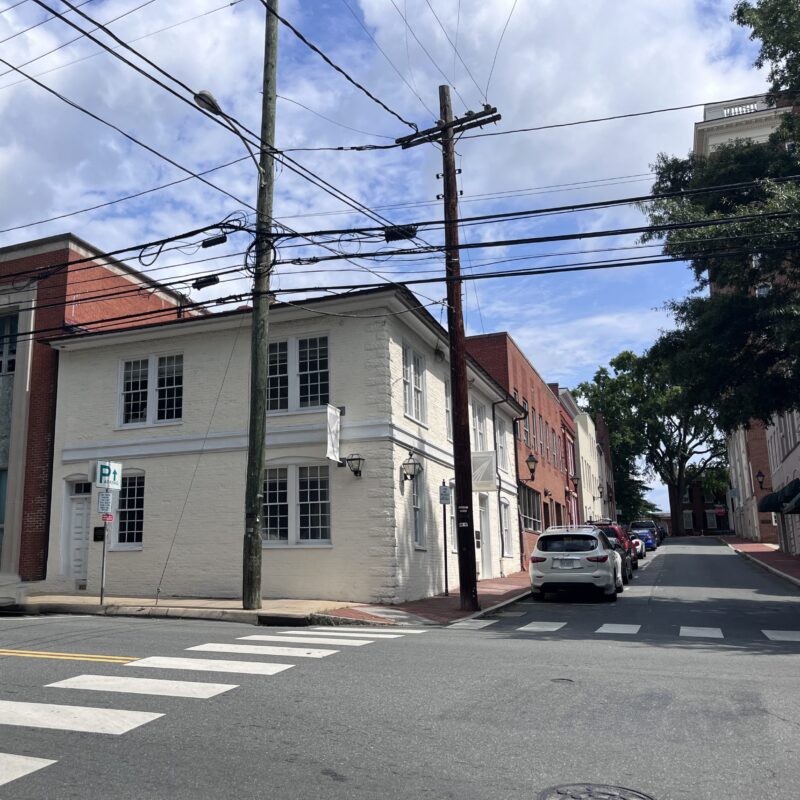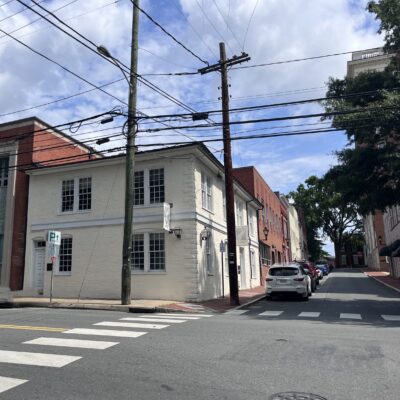In 2003, in an attempt to attract more development, the city increased the density allowed in swaths around the city. But after a wave of tall Downtown buildings won approval—and with the first of these, the Landmark Hotel at 200 E. Main St., finally under construction—the city seems to have bitten off as much development as it wants to digest. This summer, city leaders will consider decreasing the density allowed without a special-use permit, particularly reducing the Downtown Mall district, while at the same time increasing the density allowed with a special-use permit.
 “Generally, when we were first considering these new densities, I don’t think that anyone really had the expectation that the market would respond as aggressively as it did,” says Maurice Cox, who was mayor during the 2003 rezoning to allow for greater city density. |
“I think it’s a natural evolution to our first density increase in 2003,” says Maurice Cox, who was mayor when the zoning overhaul was passed. “Generally, when we were first considering these new densities, I don’t think that anyone really had the expectation that the market would respond as aggressively as it did.”
The proposed density changes are an outgrowth of an effort to tweak allowable building heights, a measure that City Council passed in May that made it harder to build nine-story buildings Downtown while making it possible to build taller buildings on West Main Street. But those changes came from a committee that studied the measure for more than a year, a committee that purposefully didn’t consider density. The new proposal comes from Jim Tolbert, director of Neighborhood Development Services.
In essence, the proposed density changes would require developers to jump through more hoops in order to get more units for new buildings. On the Downtown Mall, developers without special approvals would only be allowed 43 units per acre instead of 87 units. But with a special-use permit, developers would get up to 240 units per acre, up from 200 currently.
Few developers enjoy rezonings or applications for special-use permits, as they entail hours of public meetings and the patience (and money) to weather months and sometimes years of haggling with neighbors, the Planning Commission and City Council.
“It makes it more uncertain realistically to do something there,” says Keith Woodard, who has on indefinite hold his own plans for a dense, nine-story building next to Wachovia on the Mall—largely because of the complications of the process. “The uncertainty makes it a riskier project.”
But those processes give the public—particularly neighbors—a forum at which to be heard. Perhaps most importantly in the city’s reasoning, the added hoops give the city leverage with which to command proffers—“voluntary” contributions from developers in order to ease their projects’ impacts on roads, schools and sidewalks.
“I think it’s only natural that we would want to now exercise greater control,” says Cox. “And the way that you assure greater control and greater quality is by controlling the process. The special-use permit allows the city to do just that. It gives the city a degree of control—and you might also say leverage—to assure that the quality of development is the highest possible quality.”
The city is eyeing these zoning changes particularly with a goal of getting more affordable housing, thanks in part to legislation passed this year in the General Assembly. The new law means that the city can trade extra height and density with developers if they contribute either units or money towards affordable housing.
“In 2000, the discussion on the table was not, ‘How do we assure a significant increase in affordable housing?’ The discussion was, ‘How do we attract a middle class back into the core of Charlottesville?’” Cox says. “I think we’ve seen how the real estate market has performed in Charlottesville. The issues in affordable housing have become of increasing importance to the city.”
Woodard, however, wonders if in reducing the by-right density, the city is creating more dilemmas for affordable housing, promoting large luxury apartments at the expense of smaller 1,000-square-foot units. “I think, indirectly, decreasing density Downtown would in a sense promote suburban sprawl,” Woodard says. “Instead of building a Downtown area, more and more folks live out of town and have to commute more.”
The Planning Commission discussed the proposals at a work session last week, and is expected to take up a revised version of the density changes in July or August.
C-VILLE welcomes news tips from readers. Send them to news@c-ville.com.





